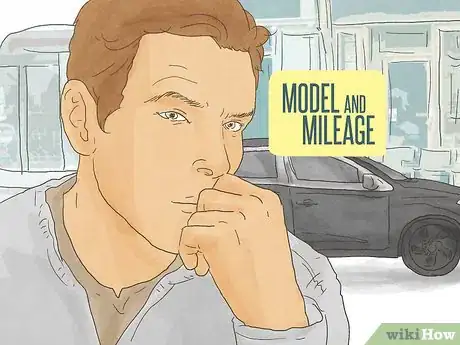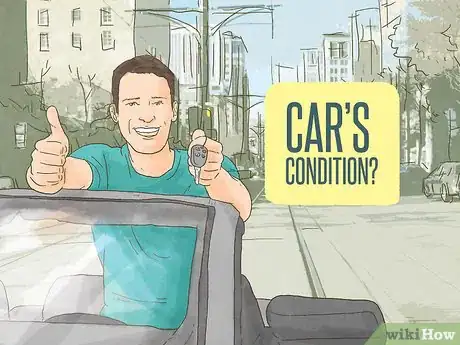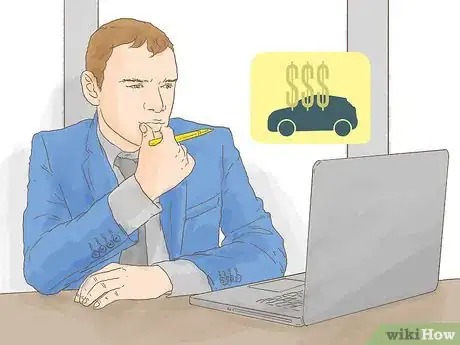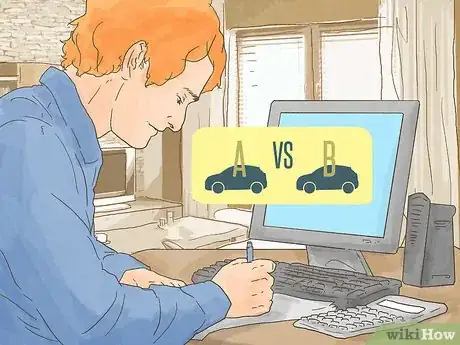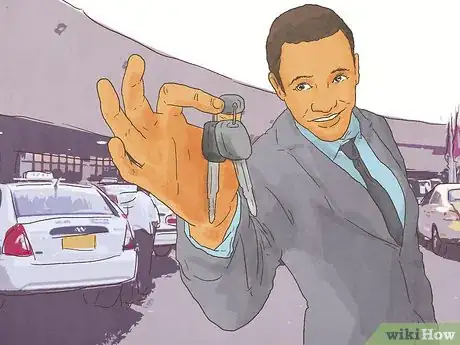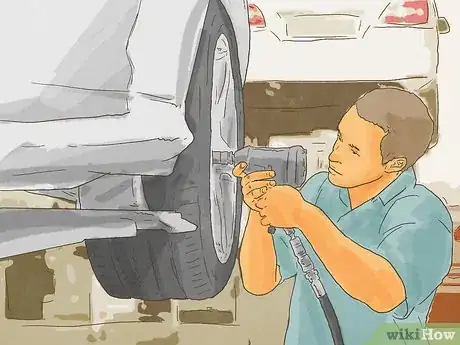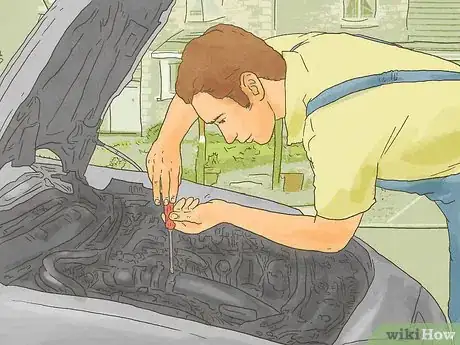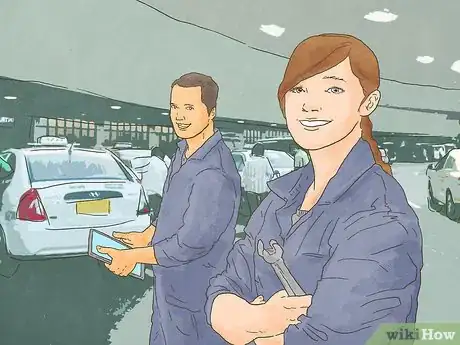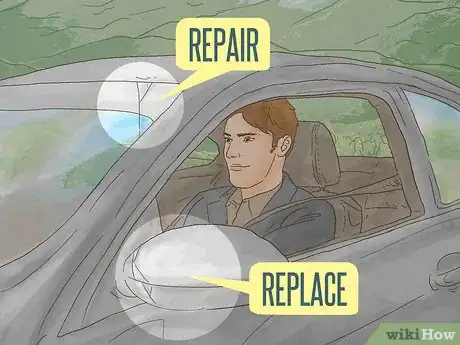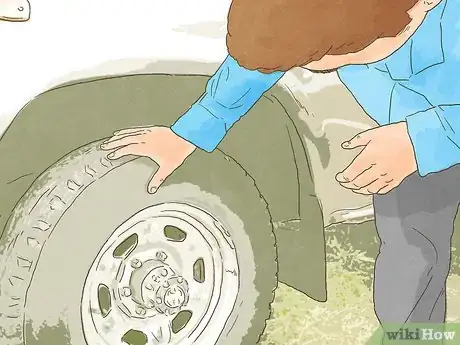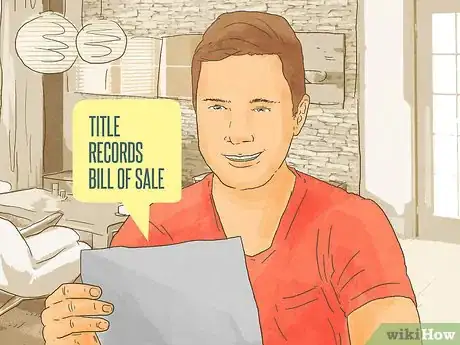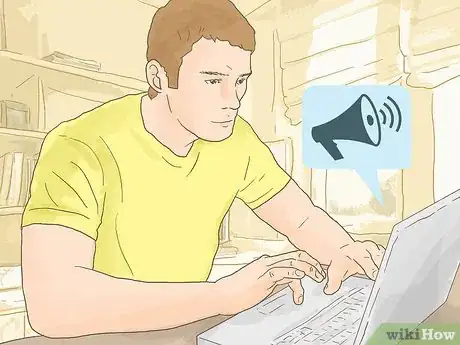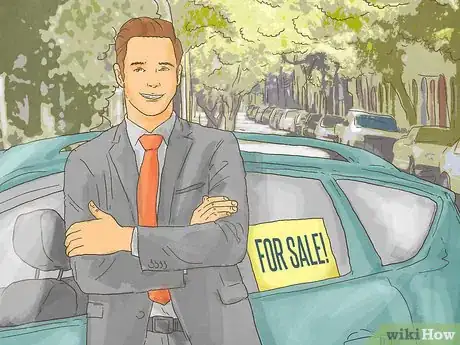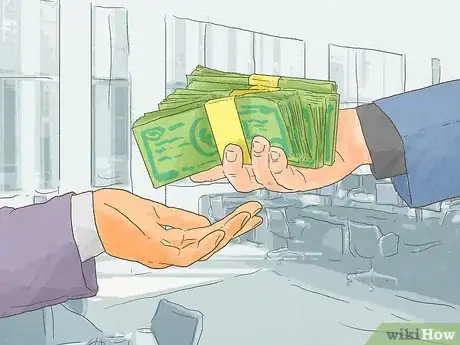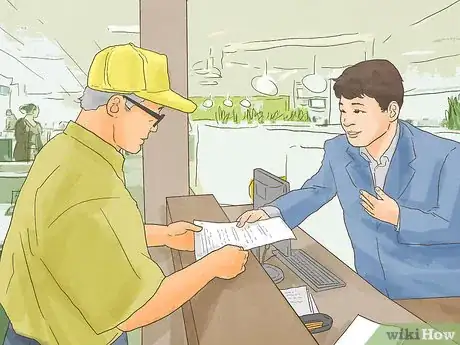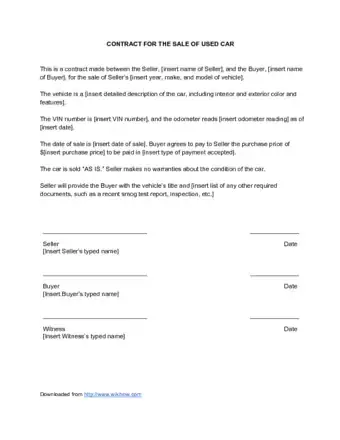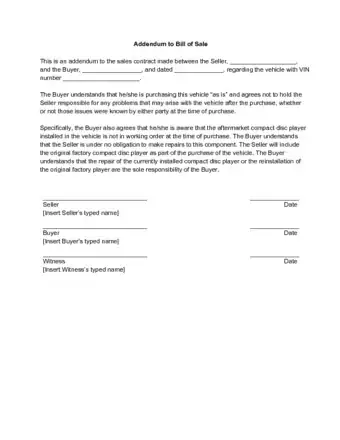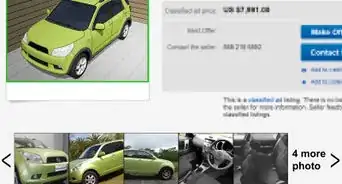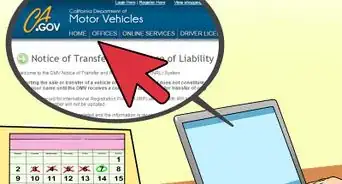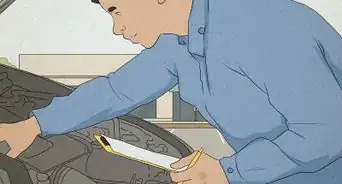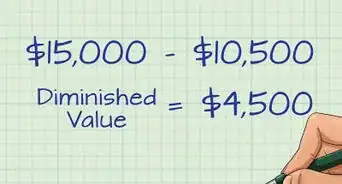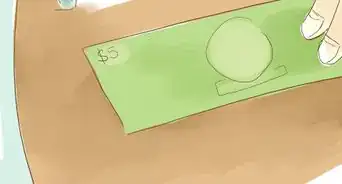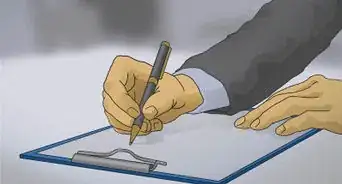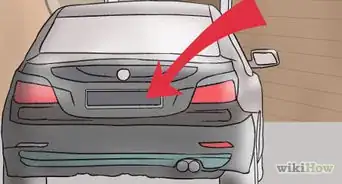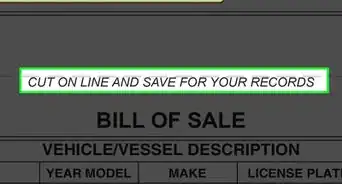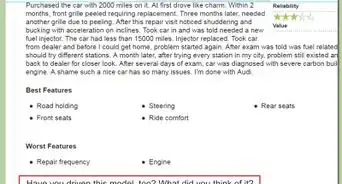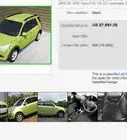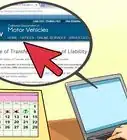This article was co-authored by Hovanes Margarian. Hovanes Margarian is the Founder and the Lead Attorney at The Margarian Law Firm, a boutique automotive litigation law firm in Los Angeles, California. Hovanes specializes in automobile dealer fraud, automobile defects (aka Lemon Law), and consumer class action cases. He holds a BS in Biology from the University of Southern California (USC). Hovanes obtained his Juris Doctor degree from the USC Gould School of Law, where he concentrated his studies in business and corporate law, real estate law, property law, and California civil procedure. Concurrently with attending law school, Hovanes founded a nationwide automobile sales and leasing brokerage which gave him insights into the automotive industry. Hovanes Margarian legal achievements include successful recoveries against almost all automobile manufacturers, major dealerships, and other corporate giants.
There are 11 references cited in this article, which can be found at the bottom of the page.
This article has been viewed 42,945 times.
When it comes to selling your car, you naturally want to get the most money possible. You can trade your car in at a dealer or make a quick sale to a used car dealership, but these options usually leave you with significantly less than what your car is actually worth. Selling a car yourself, however, allows you to get its full value. This method requires not only that you determine your car's real value, but also that you advertise and pitch it to potential buyers.[1] Use the following steps to make it through the selling process with ease.
Steps
Determining Your Car's Value
-
1Determine the exact model of your car and its mileage. Your car's make and model are easy to determine by simply looking at the exterior. However, to properly value your car you will also need the name of its trim package and any optional features present on the car. You'll want to consult the documents provided to you by the dealer, like the original window sticker, to get this information. Make sure to also record the current mileage.[2]
- For example, you wouldn't advertise your 2008 Audi A4 as simply that, but as a 2008 Audi A4 Quattro Premium Plus 2.0 liter Turbo with navigation system, S Sport package, and alloy wheels. Being specific will not only help you sell the car but can also help you price it appropriately.
- Be sure to update your car's mileage if you continue to drive it while it is on the market.
EXPERT TIPBryan Hamby is the owner of Auto Broker Club, a trusted auto brokerage in Los Angeles, California. He founded Auto Broker Club in 2014 out of a passion for cars and a unique talent for customizing the car dealership process to be on the buyer’s side. With 1,400+ deals closed, and a 90% customer retention rate, Bryan’s focus is to simplify the car buying experience through transparency, fair pricing, and world class customer service.Professional Auto Broker
 Bryan Hamby
Bryan Hamby
Professional Auto BrokerIt's important to know all the basic information about your car before you sell it. Before you list your vehicle, know all of its key selling points, and take good photos of the interior and exterior. It can also be helpful to have a list of standard and optional equipment, which you can find on the Monroney sticker if your car has one. You'll also need the VIN, the vehicle's mileage, any maintenance records, and warranty information if the car is still under warranty
-
2Assess your car's condition. Take an honest look at your vehicle. Is it really like new? Chances are, if you've owned the car for any significant length of time, it shows some wear. Be frank with yourself and make an assessment of your car's actual condition. Rank it in one of the general categories: like new, very good, good, poor, or very poor. This conditional ranking is also relative to similar cars of the same age, so look around online at comparable cars and how they are listed to get a better idea of your car's true condition.[3]
- You may also want to get an inspection of your vehicle at a local service center. They can tell you any issues with the car and give you an experienced opinion on its condition.[4]
Advertisement -
3Research its value. Kelly Blue Book (KBB), NADA Guides, and Edmunds are the major online organizations that provide an accurate assessment of your car's value based on your location, vehicle condition, vehicle model, and model year. Go to these websites and enter your information to get a report on your car's estimated value. Input as much information as possible to get an accurate estimate. Then, use this number as a starting point for pricing your car.[5]
-
4Look for comparable vehicles sold in your area. Go online to websites like Cars.com, Autotrader, and Craigslist to search for vehicles similar to yours being sold in your area. This will give you an idea of any regional pricing differences your car may experience. Compare the numbers you find to your estimated KBB or NADA value. Make sure you're looking at cars with similar options and mileage, not just year and model.[6]
-
5Compile your maintenance and accident histories. Check for any maintenance receipts for the car you have kept. Gather these in the same place to make a record of the car's maintenance that you can show to potential buyers. If they see that you have maintained the car properly and regularly, doing things like changing the oil frequently, they will know that the car is in good condition.[7]
-
6Price your car competitively. The actual price you set for your car depends on a number of variables. Start with your estimated KBB or NADA valued and adjust this up or down for the comparable cars you found online. Add a cushion on top of this price if you want to negotiate the price back down with your buyers. Alternately, you can price it lower than you think it's really worth if you want to make a quick sale.
- You can price your car higher if it is in exceptional shape for its age, has been cared for very well, or has had major parts replaced recently.
- Price your car lower if it has significant accident damage or is in need of repair.[10]
Preparing Your Car for Sale
-
1Have the car professionally detailed. Make the car look like a car you would want to buy. Unless your car is very cheap, it may be wise to spend up to $100 to have your car professionally detailed. You will likely get this money back when your buyer is willing to pay more for your now cleaner looking car. If you choose to clean it yourself, make sure to clean every part of the car, including:
- Washing and waxing the exterior.
- Washing wheels and tires and treating them with specialized tire and wheel shine.
- Washing any cloth seats or floor mats.
- Vacuuming every part of the interior.
- Cleaning out the ashtrays.
- Washing all the windows.
- Applying leather cleaner to leather seats and steering wheel.[11]
-
2Repair small damages. No one wants to buy a car that needs to be repaired immediately. To sell your car more quickly and gain the ability to charge a higher price, consider fixing small problems with your car. Look around for small paint chips, dings, dents, and windshield cracks or chips. Repair any chips in the windshield if it is damaged, or replace it if that won't do the trick. Hire a specialist to take out the dents and dings in the body. By repairing these problems now, you avoid the issue where a buyer tries to talk your price down due to cost of repairs. The idea here is that you spend money now to get more back from you car when it sells.[12]
-
3Have the car serviced. Always have your car's oil freshly changed and fluid levels checked before trying to sell it. This is a relatively cheap way to prepare your vehicle for sale.
-
4Replace cheaper parts. Some small replacements can make a huge difference in how your car looks and is viewed by potential buyers. For example, if you have cracked light lenses on your car, you should replace them. This dramatically improves the appearance of your vehicle. In addition, if your tires or brakes are noticeably in bad condition, think about replacing these as well. They may be expensive, but it could make thousands of dollars in difference in the sale price of the car.[13]
- You can also get the light lenses polished to like-new condition for about $50. This is cheaper than replacing them.
-
5Remove modifications. This is more up to your discretion, but consider removing any modifications you have made to personalize your vehicle. For example, you may have added a spoiler and replaced your headlights with LED lights. These changes may hurt or improve your odds of getting a good price for your vehicle, depending on the buyer. The best thing to do if you are unsure of whether or not it will help your sale is to remove them and return the vehicle to stock condition.[14]
-
6Gather your paperwork. To sell your vehicle privately, you will need all of the necessary documentation to comply with DMV requirements. Relevant documents include anything that deals with the ownership or condition of the vehicle. You may also have to create certain documents under DMV guidelines. Check with your local DMV office if you are unsure of what documents you need or where to get them. In general, you will need:
- The vehicle's title.
- Maintenance records.
- A Bill of Sale.
- A Release of Liability.
- Warranty documents (if your vehicle is still under warranty).
- As-is documentation.[15]
Finding a Buyer
-
1Take good pictures of your car.[16] After your car has been cleaned and you've made any replacements or repairs, pick a sunny day to take some pictures of your car. If you have a real camera, use it, but odds are your smartphone will do just fine. You'll want level, clear pictures of multiple sides of your car's exterior and interior. Some shots to focus on include:
- The exterior front, back, and sides.
- The interior front and back seats, trunk, dashboards, and floor mats.
- Wheels and tires.
- Under the hood.[17]
-
2Make an ad for your car.[18] You can do this in Microsoft Word, Publisher, or any other similar program. Add a couple of the best pictures of the car at the top. List how to contact you and basic information like the asking price, model, model year, mileage, and any features or attractive attributes. You may also wish to include the vehicles VIN number, condition, maintenance history, number of owners, or accident history.[19]
- Put tabs at the bottom of the ad with your phone number so people can rip them off and contact you.
- Include why you are selling the car.
- State whether or not the price is final, negotiable, or open to offers.[20]
-
3Advertise your car on applicable websites. Post your ad online. Be sure to add all of your pictures as well. You can post this ad on many different websites, from car-specific sites, like eBay Motors and Cars.com, to more generalized sites, like Craigslist and Facebook.[21] Make sure to include contact information, such as a phone number or email address.
- Car-specific sites like Autotrader, eBay Motors, and Cars.com will help you reach a much larger audience than Facebook or Craigslist. These should be your first choice for selling rarer or higher-value cars.
- Alternately, Craigslist and Facebook will allow you keep your audience mostly in your area, allowing for easier meet ups with potential buyers. They're also usually better sites for posting lower value or heavily used cars.
- You can look for local Facebook "yard sale" groups and post your ad there.[22]
- Post the ad on your own website if you have one.
-
4Use your personal social network. Tell your friends, co-workers, and relatives that you're selling your car. Maybe they would like to buy it or know someone searching for a car. You can also create a posting on Facebook for your car and then ask friends to share the link to their networks.
-
5Put a "for sale" sign on your car. You can then continue to drive the car or leave it on your property within view of the road so that passers-by can see it. Make sure to include contact information, like a phone number, on the sign.
-
6Meet with potential buyers. Pitch your vehicle's advantages and downplay any problems. Try to tell a story that justifies your car's price. Negotiate a price that you can both agree on. It may be a good idea to determine the smallest value you'd accept for the car and stick to that price.[23]
- Start with a higher price than what you would realistically be willing to take for the car (maybe 20 to 30 percent more) and negotiate down from there if needed.
- Read how to negotiate if you're unfamiliar with negotiation tactics.
-
7Be safe when allowing potential buyers to test drive the car. Most of the time, buyers will want to drive the car themselves before buying. You can reduce the risk of something going wrong by following some simple guidelines. First, always ask the buyer to bring a photocopy of their driver's license. If they don't, ask to see it and write down their driver's license number, address, and phone number. Next, be clear about how long you are allowing them to test drive the car for. Also, make sure to always accompany the buyer on the test drive.[24]
- You may want to check your insurance coverage before allowing test drives. Most policies cover accidents when another driver is driving your vehicle, but some do not.[25]
-
8Make safety a priority when arranging the transaction. Follow safety guidelines when meeting and exchanging money and documents with buyers. To avoid fraud, ask for the potential buyer's full name upfront. You should also clarify the types of payment you will accept. It's usually a good idea to avoid money orders and personal checks, and you should never accept monthly repayment offers (there's no guarantee the buyer will continue to pay you).[26]
- When arranging a meeting, make sure you meet in a public place within view of security cameras, if possible.
- If you decide to accept a personal check, meet the buyer outside of their bank and don't hand over the keys until you've gone inside and confirmed that they have the funds to pay for the car.
- It's safest and easiest to simply accept cash for the vehicle.
-
9Finalize the sale. To actually sell the car, you will have to fill out the proper documentation with the buyer and the DMV. Start by completing the Bill of Sale with the buyer's information and the date. Then, sign over the title to the car after receiving payment. Submit any additional paperwork your state requires, like a release of liability. Give your buyer maintenance records (with your personal info blacked out) and warranty documents if you have them. Finally, remove your vehicle from your insurance.[27]EXPERT TIPBryan Hamby is the owner of Auto Broker Club, a trusted auto brokerage in Los Angeles, California. He founded Auto Broker Club in 2014 out of a passion for cars and a unique talent for customizing the car dealership process to be on the buyer’s side. With 1,400+ deals closed, and a 90% customer retention rate, Bryan’s focus is to simplify the car buying experience through transparency, fair pricing, and world class customer service.Professional Auto Broker

 Bryan Hamby
Bryan Hamby
Professional Auto BrokerProvide the buyer with the proper paperwork. When you finalize the sale, give the new owner an "As-Is" document, and make sure both parties sign it. Also, provide a bill of sale, which will serve as the receipt for the vehicle.
Expert Q&A
-
QuestionWhere is the best place to sell a used car?
 Hovanes MargarianHovanes Margarian is the Founder and the Lead Attorney at The Margarian Law Firm, a boutique automotive litigation law firm in Los Angeles, California. Hovanes specializes in automobile dealer fraud, automobile defects (aka Lemon Law), and consumer class action cases. He holds a BS in Biology from the University of Southern California (USC). Hovanes obtained his Juris Doctor degree from the USC Gould School of Law, where he concentrated his studies in business and corporate law, real estate law, property law, and California civil procedure. Concurrently with attending law school, Hovanes founded a nationwide automobile sales and leasing brokerage which gave him insights into the automotive industry. Hovanes Margarian legal achievements include successful recoveries against almost all automobile manufacturers, major dealerships, and other corporate giants.
Hovanes MargarianHovanes Margarian is the Founder and the Lead Attorney at The Margarian Law Firm, a boutique automotive litigation law firm in Los Angeles, California. Hovanes specializes in automobile dealer fraud, automobile defects (aka Lemon Law), and consumer class action cases. He holds a BS in Biology from the University of Southern California (USC). Hovanes obtained his Juris Doctor degree from the USC Gould School of Law, where he concentrated his studies in business and corporate law, real estate law, property law, and California civil procedure. Concurrently with attending law school, Hovanes founded a nationwide automobile sales and leasing brokerage which gave him insights into the automotive industry. Hovanes Margarian legal achievements include successful recoveries against almost all automobile manufacturers, major dealerships, and other corporate giants.
Attorney I suggest making ads on websites like Craigslist or Autotrader. For an even easier option, you can sell your car to an appraisal company like Carmax. Just keep in mind, you may get less money going this route than you would through a private sale.
I suggest making ads on websites like Craigslist or Autotrader. For an even easier option, you can sell your car to an appraisal company like Carmax. Just keep in mind, you may get less money going this route than you would through a private sale.
Useful Documents
Warnings
- Be careful where and how you post private contact information, and always check to see if your customers are legitimately interested in the vehicle.⧼thumbs_response⧽
References
- ↑ Hovanes Margarian. Attorney. Expert Interview. 15 September 2020.
- ↑ http://www.kbb.com/sell-your-car/steps-to-sell-your-car/?r=42604303685948260
- ↑ http://www.kbb.com/sell-your-car/know-your-cars-true-condition/
- ↑ http://www.kbb.com/sell-your-car/know-your-cars-true-condition/
- ↑ http://www.dmv.org/buy-sell/selling-your-car/guide-to-selling-your-car.php
- ↑ http://www.kbb.com/sell-your-car/set-the-asking-price-for-your-car/
- ↑ http://www.kbb.com/sell-your-car/steps-to-sell-your-car/?r=42604303685948260
- ↑ http://www.kbb.com/sell-your-car/steps-to-sell-your-car/?r=42604303685948260
- ↑ http://lifehacker.com/get-a-free-vehicle-history-report-before-you-buy-a-car-512856477
- ↑ http://www.kbb.com/sell-your-car/set-the-asking-price-for-your-car/
- ↑ http://www.dmv.org/buy-sell/selling-your-car/guide-to-selling-your-car.php
- ↑ http://www.kbb.com/sell-your-car/increase-your-cars-resale-value/
- ↑ http://www.kbb.com/sell-your-car/increase-your-cars-resale-value/
- ↑ http://lifehacker.com/5991706/how-can-i-sell-my-used-car-for-as-much-profit-as-possible
- ↑ http://www.dmv.org/buy-sell/selling-your-car/guide-to-selling-your-car.php
- ↑ Hovanes Margarian. Attorney. Expert Interview. 15 September 2020.
- ↑ http://www.dmv.org/buy-sell/selling-your-car/guide-to-selling-your-car.php
- ↑ Hovanes Margarian. Attorney. Expert Interview. 15 September 2020.
- ↑ http://www.dmv.org/buy-sell/selling-your-car/guide-to-selling-your-car.php
- ↑ http://www.kbb.com/sell-your-car/create-a-classifieds-car-ad-that-sells/
- ↑ Hovanes Margarian. Attorney. Expert Interview. 15 September 2020.
- ↑ http://singlemomsincome.com/facebook-yard-sales-a-better-alternative-to-craigslist/
- ↑ http://www.dmv.org/buy-sell/selling-your-car/guide-to-selling-your-car.php
- ↑ http://www.dmv.org/articles/tips-for-the-savvy-seller-how-to-conduct-a-used-car-test-drive/
- ↑ http://www.dmv.org/articles/tips-for-the-savvy-seller-how-to-conduct-a-used-car-test-drive/
- ↑ http://www.dmv.org/buy-sell/selling-your-car/guide-to-selling-your-car.php
- ↑ http://www.dmv.org/buy-sell/selling-your-car/guide-to-selling-your-car.php

